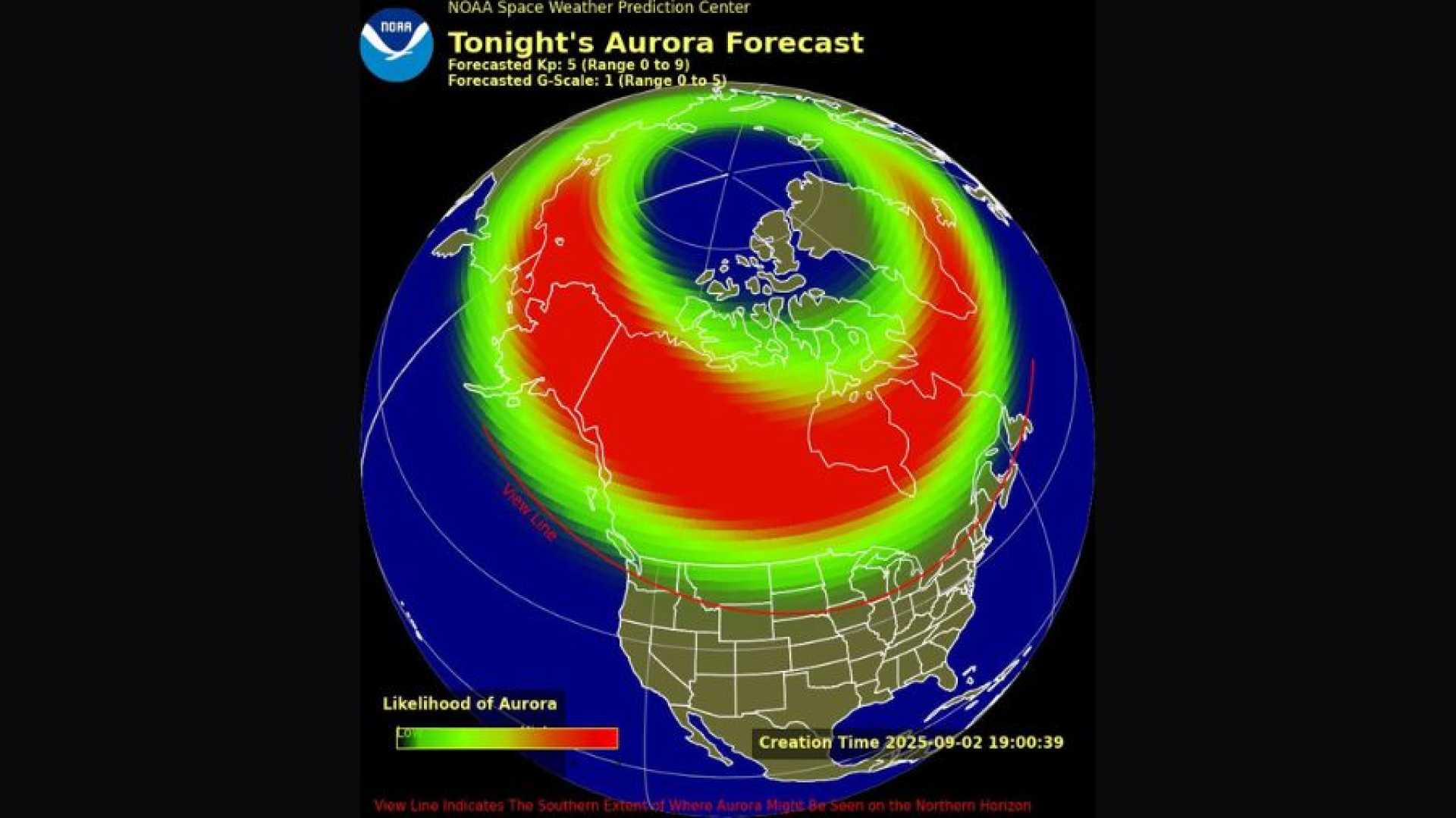World
Geomagnetic Storm Watch Issued as Northern Lights Expected Tonight

COLORADO, USA – NOAA‘s Space Weather Prediction Center has issued a geomagnetic storm watch due to several incoming coronal mass ejections (CMEs) from the Sun. The strongest impacts are expected between late Thursday night and early Friday morning, October 17, 2025.
Between October 11 and 13, the Sun unleashed multiple CMEs, ejecting solar plasma and magnetic energy toward Earth. Forecasters predict that these bursts will cause the northern lights, or Aurora Borealis, to be visible farther south than usual, affecting 15 U.S. states.
The states likely to witness the auroras include Alaska, Washington, Idaho, Montana, North Dakota, South Dakota, Minnesota, Wisconsin, Michigan, New York, Maine, New Hampshire, Vermont, Wyoming, and Iowa. NOAA anticipates that conditions will be ideal for viewing the auroras, provided observers choose locations with minimal light pollution and clear skies.
The best viewing time is expected to be between midnight and 2 a.m. local time. Although the storm is classified as G2 (moderate), it may cause some disruptions to technology, including power grids and satellites, but forecasters don’t anticipate severe impacts.
Sunspot region AR4246 has been particularly active, unleashing M-class solar flares that contributed to the CMEs heading towards Earth. These solar events are crucial as they can trigger geomagnetic storms when they interact with Earth’s magnetic field.
Residents in the affected states are advised to prepare for a potentially stunning light show tonight. Conditions, however, are unpredictable, and the view will depend on various factors, including weather conditions.
For those hoping to catch a glimpse of the aurora, experts recommend checking space weather apps for real-time updates on aurora forecasts and optimal viewing conditions. Although the celestial phenomenon is awe-inspiring, its appearance can vary greatly from region to region based on solar activity.
As Earth braces for these solar storms, skywatchers are reminded that auroras can appear unexpectedly, making each viewing experience unique.












